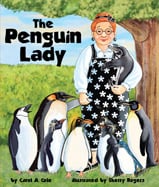Alignment to Standards for TX

| Grade | Number | Standard |
|---|---|---|
| 1 | 111.13 (1.1) | uses whole numbers to describe and compare quantities. |
| 1 | 111.13 (1.5) (C) | is expected to compare and order whole numbers using place value. |
| 1 | 112.12 (b) (10) | organisms resemble their parents and have structures and processes that help them survive within their environments. |
| 1 | 112.12 (b) (10) (A) | external characteristics of an animal are related to where it lives, how it moves, and what it eats |
| 1 | 112.12 (b) (9) | the living environment is composed of relationships between organisms and the life cycles that occur. |
| 1 | 113.3. (1.5) | The student understands the purpose of maps and globes. |
| 2 | 112.13. (b) (10) (A) | compare how the physical characteristics and behaviors of animals help them meet their basic needs such as fins help fish move and balance in the water |
| 2 | 113.4. (2.5) | uses simple geographic tools such as maps, globes, and photographs. |
| 2 | 113.4. (2.5) (A) | use symbols, find locations, and determine directions on maps and globes; and |
| 2 | 113.4. (2.6) | locations and characteristics of places and regions. |
| 3 | 111.15 (3.11) (A) | is expected to use linear measurement tools to estimate and measure lengths using standard units. |
| 3 | 112.14. (b) (10) | organisms undergo similar life processes and have structures that help them survive within their environments. |
| 3 | 112.14. (b) (10) (A) | explore how structures and functions of plants and animals allow them to survive in a particular environment |
| 3 | 112.14. (b) (9) | organisms have characteristics that help them survive and can describe patterns, cycles, systems, and relationships within the environments. |
| 3 | 113.5. (3.5) (A) | use cardinal and intermediate directions to locate places such as the Amazon River, Himalayan Mountains, and Washington D.C. on maps and globes; |
| 4 | 112.15. (b) (10) | organisms undergo similar life processes and have structures that help them survive within their environment. |
| 5 | 112.16. (b) (10) | organisms undergo similar life processes and have structures that help them survive within their environments. |
| K | 111.12 (K.1) | uses numbers to name quantities. |
| K | 111.12 (K.1) (A) | is expected to use one-to-one correspondence and language such as more than, same number as, or two less than to describe relative sizes of sets of concrete objects. |
| K | 111.12 (K.10) | directly compares the attributes of length, area, weight/mass, capacity, and/or relative temperature. uses comparative language to solve problems and answer questions. |
| K | 111.12 (K.11) | uses time to describe, compare, and order events and situations. |
| K | 111.12 (K.11) (B) | is expected to sequence events (up to three). |
| K | 112.11 (b) (10) | organisms resemble their parents and have structures and processes that help them survive within their environments. |
| K | 113.2. (K.16) (B) | create and interpret visuals including pictures and maps. |
| PK | PK.1. (B) | counts by ones to 10 or higher |
| PK | PK.1. (C) | counts concrete objects to five or higher |
| PK | PK.1. (D) | begins to compare the numbers of concrete objects using language (e.g., ''same'' or ''equal,'' ''one more,'' ''more than,'' or ''less than'') |
| PK | PK.1. (E) | begins to name ''how many'' are in a group of up to three (or more) objects without counting (e.g., recognizing two or three crayons in a box) |